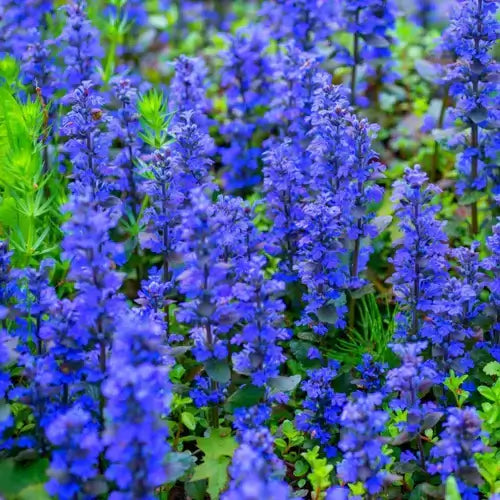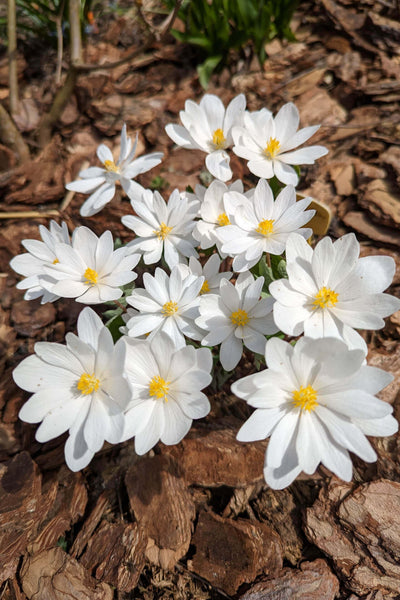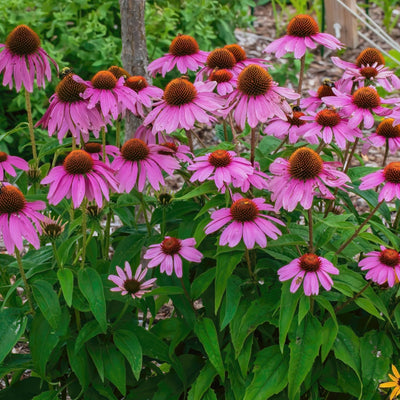Bugleweed Plant - Ajuga Reptans
To transform bare spots and shady borders into lush mats of foliage and color, proper bugleweed plant care is essential. People love bugleweed because it spreads quickly and has pretty leaves and spike-shaped flowers in the spring. Bugleweed plant care can help you get reliable coverage, a nice texture, and yearly interest with little work, whether you want a neat layer of ground under trees or a living mulch that keeps weeds down.

Understanding the Bugleweed Plant
For bugleweed ground cover, Ajuga reptans is often used because it spreads quickly through runners and makes a thick mat. This plant can grow in both sun and shade, but the amount of light affects the color and health of the leaves.
Bugleweed plant nocturnal growth is one interesting trait that farmers study. During the cooler evening hours, the plant's runners can spread out, which helps the beds fill in slowly. Knowing how this behavior works helps you plan steps for spacing and control.
You can find bugleweed for sale or bugleweed plants for sale from reliable websites that list hardiness and cultivar traits. This will help you find the right plant for your spot.
How to Plant Bugleweed
Choosing the Right Spot
For the best results, choose a spot with some shade to light sun. In hot places, morning sun and afternoon shade keep leaves from getting burned. Crown rot can be avoided by making sure there is good drainage.
Step-by-Step Planting
1. Get the dirt ready by pulling out any weeds and loosening the top 4 to 6 inches.
2. Mix in compost to make the soil more fertile and help water flow.
3. Space plant plugs or divisions 8 to 12 inches apart to give them room to grow.
4. Give the dirt a lot of water after planting to make it settle.
Bugleweed looks nice with early-shade plants to add some seasonal interest. For example, put Bloodroot Plant under your plants to get spring whites, and add higher plants like Purple Coneflower to make layers of color.
Seasonal Bugleweed Plant Care
If you take good care of your ground cover all year, it stays healthy and looks nice. As part of your regular bugleweed plant care, put these yearly tips to use.
- Spring: Get rid of winter waste and spread out areas that are too crowded. If the dirt isn't good, use a balanced slow-release fertilizer.
- In the summer: Water deeply when it's dry for a long time. If the bed starts to touch nearby plants, cut back the roots.
- In the fall: If you need to, split up thick mats and add a light mulch to cover the roots in spots that get cold.
- Winter: If you live in a warm area, bugleweed may stay mostly green all winter. Thin mulch helps plants survive the winter in colder places.
Keeping the right distance between plants and letting them get enough light will help them do their best as a bugleweed ground cover.
Controlling Spread and Using Barriers
Gardeners must plan for control because bugleweed for sale is valued for its quick spread. Put down low edges to keep runners in the right place. Cutting back runners on a regular basis also stops them from spreading into lawns or beds.
Plant in raised beds or use root shields if you want to keep patches from spreading. This gives you the benefits of a ground cover that spreads quickly without having to keep up with the upkeep of removing it all the time.
Bugleweed Plant Nocturnal Growth Explained
Understanding bugleweed plant nocturnal growth is useful knowledge for gardeners. The plant can keep growing even when conditions change during the day because its rhizomes help it to grow at night. This behavior helps explain why dividing plants in late summer or early fall often works and why new mats appear quickly after planting. The plant is busy moving nutrients and runners during cooler hours.
Common Problems & Solutions
Even though bugleweed is tough, some problems can happen. Take a look at these common bugleweed plant care issues and how to quickly fix them.
- Crown rot: Make sure the earth drains well and don't water it too much. Plant again in raised beds if the soil doesn't drain well.
- Changes in the color of the leaves: Too much strong afternoon sun can bleach the leaves. Move to some shade or give brief shade.
- Too many plants: Every two to three years, split or thin out thick mats to keep air moving and lower the risk of fungus.
- Spreading invasive plants: use border or trim runners, and get rid of stray plants right away.
Buying and Using Bugleweed
Bugleweed plants or bugleweed plants for sale should be healthy plugs or splits with firm roots and no signs of disease. Reliable nurseries will list cultivars with descriptions of leaf color and adult spread, which will help you decide how densely to plant them.
Bugleweed grows well on shady slopes, under bushes, and along paths where grass doesn't do well. As a bugleweed ground cover, it lowers the amount of work that needs to be done, keeps weeds down, and its spring flowers help small insects.
FAQs
Q1: How quickly does bugleweed spread to cover an area?
Depending on the type of bugleweed and the growing conditions, it can grow into a thick mat in one to two growing seasons.
Q2: Can bugleweed grow in full sun and full shade?
Yes, it can handle both extremes, but it does best in some shade, where the color and health of the leaves are best.
Q3: How tall does bugleweed grow when it blooms?
The plant is usually 4 to 8 inches tall and the flower spikes can get up to 10 inches long when they bloom.
Q4: Is bugleweed invasive or hard to control?
It spreads quickly but it is easy to keep under control by edging, cutting, and dividing it.
Q5: Does bugleweed attract pollinators like bees and butterflies?
Yes, Bees and butterflies like its flowers which makes it a useful plant for pollinator friendly gardening.



